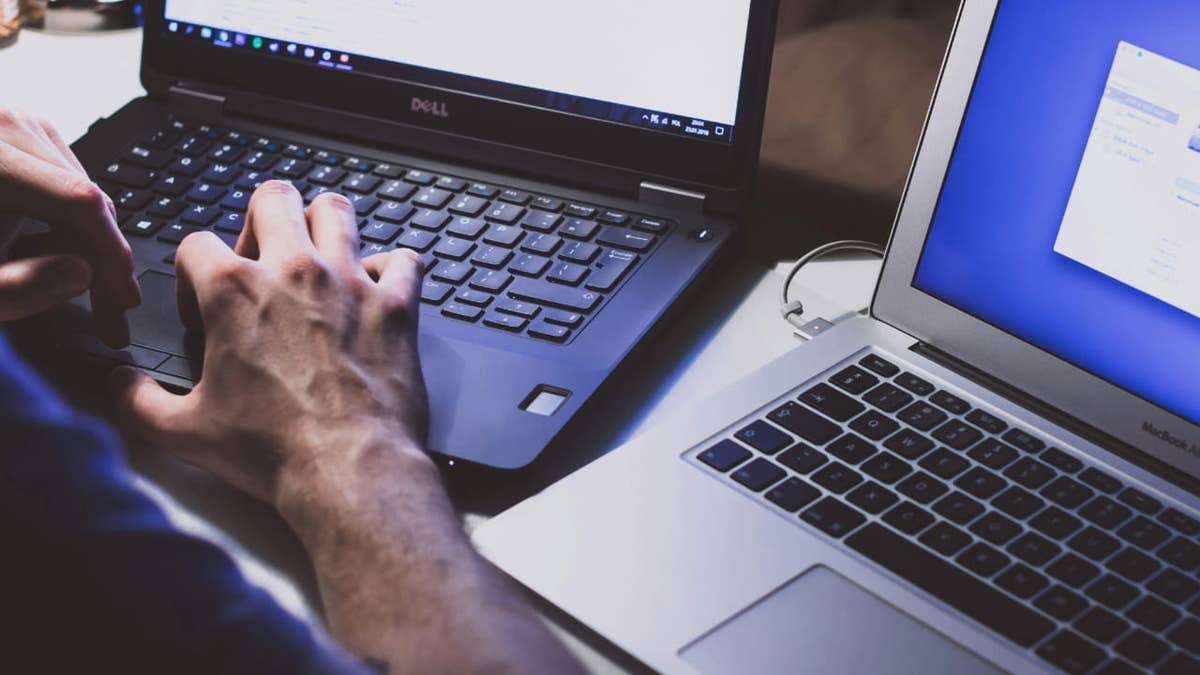Technology
T-Mobile is raising prices on some of its prized legacy plans

T-Mobile is letting some legacy plan customers know that a price increase is coming, 9to5Google reports. Many Reddit users on r/tmobile said the carrier sent them text messages that their plans will raise by $5 per month per line starting on April 2nd.
In an internal memo obtained by CNET, T-Mobile consumer group president Jon Freier says the price increase addresses “rising costs” for the company. The memo noted that affected customers would be notified by the end of the day today.
CNET says it’s unclear which legacy plans will be affected but notes that Go5G, Go5G Plus, and Go5G Next subscribers won’t be subject to the price hikes. T-Mobile had already increased the rates of some of these older plans by $2 to $5 last year, and Freier apparently notes in the memo that “no line that received a prior increase will receive an additional adjustment as part of this initiative.”
“While most customers are not included, we’re wrapping up the price adjustments that began last year in response to rising costs,” T-Mobile says on its support account on X. “We are still committed to providing low prices and the most value across all plans.” The account also says that these changes should not affect customers with Price Lock.

Technology
Tim Cook says more AIs are coming to Apple Intelligence

This isn’t the first time we’re hearing about third-party integrations, as Apple software SVP Craig Federighi said last year that the company “may look forward to doing integrations with different models like Google Gemini in the future.”
Cook also said that Apple is on track to release an AI-upgraded Siri next year, adding that “our intention is to integrate with more people over time.” Apple is “making good progress” on Siri, he added during an earnings call on Thursday.
The news comes as Apple releases its fourth quarter earnings results, which revealed that the company raked in a record $102.5 billion over the past few months, marking an eight percent increase when compared to the same time last year.
Sales from the iPhone 17 lineup likely only make up a small portion of Apple’s overall $49.03 billion in iPhone revenue. The new lineup includes the iPhone Air — Apple’s thinnest device yet — along with the upgraded iPhone 17 and 17 Pro. This year, Apple brought some features previously reserved for its Pro-level iPhones to its entry-level device, including an always-on display with ProMotion support for smoother scrolling.
Apple saw an increase in revenue across its other products, too, with $8.72 billion in revenue from Macs and $6.95 billion from iPads. Apple’s services division, which includes subscriptions to Apple TV, Apple Music, Apple Fitness Plus, and Apple Arcade, ballooned to $28.8 billion.
Technology
183 million email passwords leaked: Check yours now

NEWYou can now listen to Fox News articles!
A massive online leak has exposed more than 183 million stolen email passwords gathered from years of malware infections, phishing campaigns and older data breaches. Cybersecurity experts say it is one of the largest compilations of stolen credentials ever discovered.
Security researcher Troy Hunt, who runs the website Have I Been Pwned, found the 3.5-terabyte dataset online. The credentials came from infostealer malware and credential stuffing lists. This malware secretly collects usernames, passwords and website logins from infected devices.
Researchers say the data contains both old and newly discovered credentials. Hunt confirmed that 91% of the data had appeared in previous breaches, but about 16.4 million email addresses were completely new to any known dataset.
Sign up for my FREE CyberGuy Report
Get my best tech tips, urgent security alerts and exclusive deals delivered straight to your inbox. Plus, you’ll get instant access to my Ultimate Scam Survival Guide — free when you join my CYBERGUY.COM newsletter.
DISCORD CONFIRMS VENDOR BREACH EXPOSED USER IDS IN RANSOM PLOT
Cyber experts uncovered a 3.5-terabyte data dump containing millions of stolen logins. (Kurt “CyberGuy” Knutsson)
The real risk behind the password leak
The leak puts millions of users at risk. Hackers often collect stolen logins from multiple sources and combine them into large databases that circulate on dark web forums, Telegram channels and Discord servers.
If you have reused passwords across multiple sites, attackers can use this data to break into your accounts through credential stuffing. This method tests stolen username and password pairs on many different platforms.
The risk remains real for anyone using old or repeated credentials. One compromised password can unlock social media, banking and cloud accounts.
GOOGLE CONFIRMS DATA STOLEN IN BREACH BY KNOWN HACKER GROUP

Researcher Troy Hunt traced the leak to malware that secretly steals passwords from infected devices. (Jens Büttner/picture alliance via Getty Images)
Google responds to the reports
Google confirmed there was no Gmail data breach. In a post on X, the company stated “reports of a Gmail security breach impacting millions of users are false. Gmail’s defenses are strong, and users remain protected.”
Google clarified that the leak came from infostealer databases that compile years of stolen credentials from across the web. These databases are often mistaken for new breaches when, in fact, they represent ongoing theft activity. Troy Hunt also confirmed the dataset originated from Synthient’s collection of infostealer logs, not from a single platform or recent attack. While no new breach occurred, experts warn that leaked credentials remain dangerous because cybercriminals reuse them for future attacks.
How to check if you were exposed
To see if your email was affected, visit Have I Been Pwned. It is the first and official source for this newly added dataset. Enter your email address to find out if your information appears in the Synthient leak.
Many password managers also include built-in breach scanners that use the same data sources. However, they may not yet include this new collection until their databases update.
If your address shows up, treat it as compromised. Change your passwords immediately and turn on stronger security features to protect your accounts.
COLUMBIA UNIVERSITY DATA BREACH HITS 870,000 PEOPLE

The 183 million exposed credentials came from malware, phishing and old data breaches. (Kurt “CyberGuy” Knutsson)
9 steps to protect yourself now
Protecting your online life starts with consistent action. Each step below adds another layer of defense against hackers, malware and credential theft.
1) Change your passwords immediately
Start with your most important accounts, such as email and banking. Use strong, unique passwords with letters, numbers and symbols. Avoid predictable choices like names or birthdays.
Never reuse passwords. One stolen password can unlock multiple accounts. Each login should be unique to protect your data.
A password manager makes this simple. It stores complex passwords securely and helps you create new ones. Many managers also scan for breaches to see if your current passwords have been exposed.
Next, check whether your email has been caught in a recent credential leak. Our No. 1 password manager pick includes a built-in Breach Scanner that searches trusted databases, including the newly added Synthient data from Have I Been Pwned. It helps you find out if your email or passwords have appeared in any known leaks. If you see a match, change any reused passwords right away and secure those accounts with strong, unique credentials.
Check out the best expert-reviewed password managers of 2025 at Cyberguy.com.
2) Enable two-factor authentication (2FA)
Turn on 2FA wherever possible. It adds a powerful second layer of defense that blocks intruders even if they have your password. You will receive a code by text, app or security key. That code ensures only you can log in to your accounts.
3) Use an identity theft service for continuous monitoring
Identity Theft companies can monitor personal information like your Social Security number (SSN), phone number and email address, and alert you if it is being sold on the dark web or being used to open an account. They can also assist you in freezing your bank and credit card accounts to prevent further unauthorized use by criminals. It’s a smart way to stay one step ahead of hackers.
See my tips and best picks on how to protect yourself from identity theft at Cyberguy.com.
4) Protect your devices with strong antivirus software
Infostealer malware hides inside fake downloads and phishing attachments. A strong antivirus software scans your devices to stop threats before they spread. Keep your antivirus updated and run frequent scans. Even one unprotected device can put your whole digital life at risk.
The best way to safeguard yourself from malicious links that install malware, potentially accessing your private information, is to have strong antivirus software installed on all your devices. This protection can also alert you to phishing emails and ransomware scams, keeping your personal information and digital assets safe.
Get my picks for the best 2025 antivirus protection winners for your Windows, Mac, Android and iOS devices at Cyberguy.com.
5) Avoid saving logins in your web browser
Browsers are convenient but risky. Infostealer malware often targets saved passwords in your web browser.
6) Keep software updated
Updates fix security flaws that hackers exploit. Turn on automatic updates for your operating system, antivirus and apps. Staying current keeps threats out.
7) Download only from trusted sources
Avoid unknown websites that offer free downloads. Fake apps and files often contain hidden malware. Use official app stores or verified company websites.
8) Review your account activity often
Check your accounts regularly for unusual logins or device connections. Many platforms show a login history. If something looks off, change your password and enable 2FA immediately.
9) Consider a personal data removal service
The massive leak of 183 million credentials shows just how far your personal information can spread and how easily it can resurface years later in aggregated hacker databases. Even if your passwords were part of an old breach, data like your name, email, phone number or address may still be available through data broker sites. Personal data removal services can help reduce your exposure by scrubbing this information from hundreds of these sites.
While no service can guarantee total removal, they drastically reduce your digital footprint, making it harder for scammers to cross-reference leaked credentials with public data to impersonate or target you. These services monitor and automatically remove your personal info over time, which gives me peace of mind in today’s threat landscape.
Check out my top picks for data removal services and get a free scan to find out if your personal information is already out on the web by visiting Cyberguy.com.
Get a free scan to find out if your personal information is already out on the web: Cyberguy.com.
Kurt’s key takeaways
This leak highlights the ongoing danger of malware and password reuse. Prevention remains the best defense. Use unique passwords, enable 2FA and stay alert to keep your data safe. Visit Have I Been Pwned today to check your email and take action. The faster you respond, the better you protect your identity.
Have you ever discovered your data in a breach? What did you do next? Let us know by writing to us at Cyberguy.com.
Sign up for my FREE CyberGuy Report
Get my best tech tips, urgent security alerts, and exclusive deals delivered straight to your inbox. Plus, you’ll get instant access to my Ultimate Scam Survival Guide — free when you join my CYBERGUY.COM newsletter.
Copyright 2025 CyberGuy.com. All rights reserved.
Technology
Microsoft says it’s recovering after Azure outage took down 365, Xbox, and Starbucks

Starting at approximately 16:00 UTC on 29 October 2025, customers and Microsoft services leveraging Azure Front Door (AFD) may have experienced latencies, timeouts, and errors. We have confirmed that an inadvertent configuration change was the trigger event for this issue.
Affected Azure services may have included, but were not limited to:
App Service, Azure Active Directory B2C, Azure Communication Services, Azure Databricks, Azure Healthcare APIs, Azure Maps, Azure Portal, Azure SQL Database, Azure Virtual Desktop, Container Registry, Media Services, Microsoft Defender External Attack Surface Management, Microsoft Entra ID (Mobility Management Policy Service, Identity & Access Management, and User Management UX), Microsoft Purview, Microsoft Sentinel (Threat Intelligence), and Video Indexer.
The AFD service is now operating above 98% availability. While the majority of customers and services are mitigated or seeing strong improvement across affected regions, we are continuing to work on tail-end recovery for remaining impacted customers and services. We have revised our mitigation time and are currently tracking toward full mitigation by 00:40 UTC on 30 October 2025, though we will communicate if mitigation is achieved sooner.
-

 New York1 week ago
New York1 week agoVideo: How Mamdani Has Evolved in the Mayoral Race
-

 News1 week ago
News1 week agoVideo: Federal Agents Detain Man During New York City Raid
-

 News1 week ago
News1 week agoBooks about race and gender to be returned to school libraries on some military bases
-

 News1 week ago
News1 week agoVideo: Driver Crashes Car Into Security Gate Near White House
-

 News1 week ago
News1 week agoVideo: Inside Our Reporter’s Collection of Guantánamo Portraits
-

 Politics1 week ago
Politics1 week agoHunter Biden breaks silence on pardon from dad Joe: ‘I realize how privileged I am’
-

 Politics1 week ago
Politics1 week agoJack Smith defends subpoenaing Republican senators’ phone records: ‘Entirely proper’
-

 World1 week ago
World1 week agoTrump to host NATO chief at White House as Putin meeting collapses

















